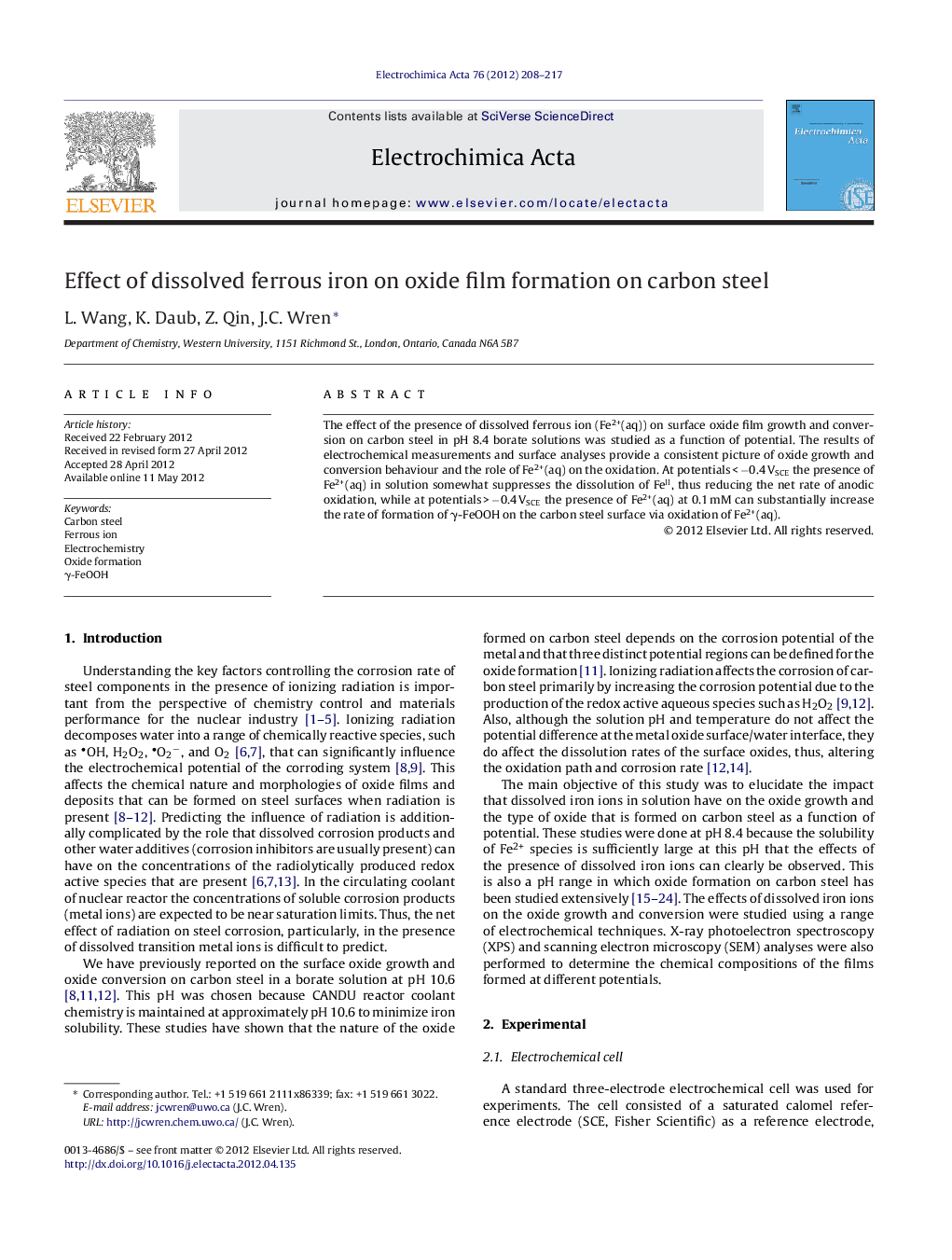| Article ID | Journal | Published Year | Pages | File Type |
|---|---|---|---|---|
| 188206 | Electrochimica Acta | 2012 | 10 Pages |
Abstract
The effect of the presence of dissolved ferrous ion (Fe2+(aq)) on surface oxide film growth and conversion on carbon steel in pH 8.4 borate solutions was studied as a function of potential. The results of electrochemical measurements and surface analyses provide a consistent picture of oxide growth and conversion behaviour and the role of Fe2+(aq) on the oxidation. At potentials < −0.4 VSCE the presence of Fe2+(aq) in solution somewhat suppresses the dissolution of FeII, thus reducing the net rate of anodic oxidation, while at potentials > −0.4 VSCE the presence of Fe2+(aq) at 0.1 mM can substantially increase the rate of formation of γ-FeOOH on the carbon steel surface via oxidation of Fe2+(aq).
Related Topics
Physical Sciences and Engineering
Chemical Engineering
Chemical Engineering (General)
Authors
L. Wang, K. Daub, Z. Qin, J.C. Wren,
